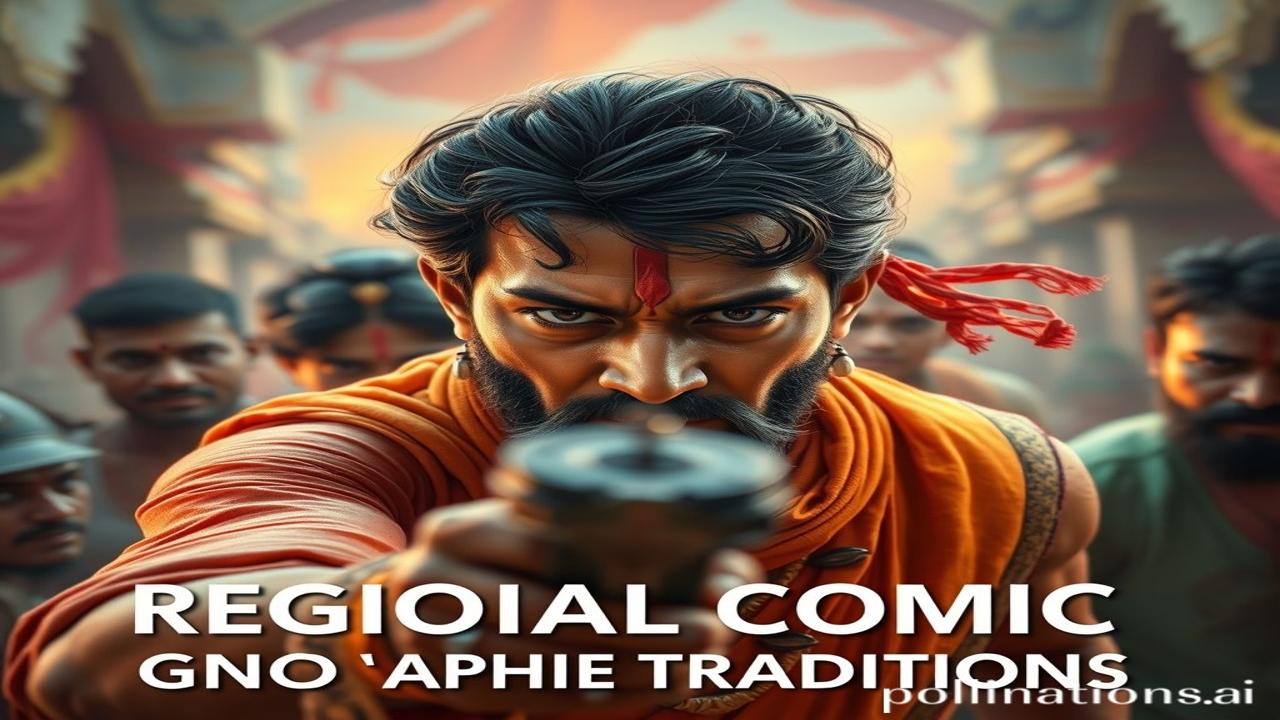Khoi hui kahaniyon ki Parchhayi: Regional Comic and Graphic Novel Traditions of India
Kabhi socha hai, jab Diwali ki diyon ki roshni kam hone lagti hai, aur sard hawa mein mitti ki sondhi khushboo hoti hai, tab hamare buzurg hume kaunsi kahaniyan sunate the? Woh kahaniyan sirf manoranjan nahin thi, woh hamari dharohar (heritage) thi, hamari pehchan (identity). Unhi kahaniyon ne alag-alag roop dharan kar liye, kabhi natak bankar, kabhi kalakari (art) bankar, aur aaj… comics aur graphic novels bankar.
Comic Books? Graphic Novels? Kya Fark Hai?
Okay, okay, I know what you’re thinking. “Comic book aur graphic novel mein kya difference hai, yaar?” Well, both use illustrated panels to tell a story. But graphic novels tend to be longer, more complex, and often deal with more serious themes. Think of it like this: Comic books are like short stories, graphic novels are like full-length novels…but with pictures!
Bhartiya Comic Kala ka Uday: Ek Historical Canvas
Bhartiya comics ka itihas itna hi rangeen hai jitni Holi ki rangoli. It all started in the late 1960s and early 1970s. Think about it: India was a young nation, figuring out its identity. People were eager to connect with their roots, their myths, their heroes. This is where stalwarts like Anant Pai, the “Father of Indian Comics,” came in.
-
Amar Chitra Katha: Pai’s vision was simple: to introduce Indian children to their heritage through comics. Amar Chitra Katha became a household name, translating epics like the Mahabharata and Ramayana into accessible, beautifully illustrated stories. Imagine bacche (kids) reading about Hanuman’s adventures instead of imported superhero stories!
-
Indrajal Comics: This one brought international heroes like Phantom and Mandrake the Magician to Indian audiences, but with a desi twist! The stories were often adapted to resonate with Indian values and settings.
But, bhaiyya, yeh toh national level ki baat hui. What about the regional variations?
Desi Tadka: A Taste of Regional Comic Traditions
The real magic happened when regional artists and writers started telling their own stories, in their own languages, reflecting their unique cultures.
-
Bengali Comics: Bengal has always been a hub of art and literature. Comic books and graphic novels flourished here, often incorporating elements of satire, political commentary, and historical drama. Artists like Narayan Debnath, with his iconic character Handa Bhonda, brought laughter and social commentary to countless readers.
-
Tamil Comics: In Tamil Nadu, comics became a powerful medium for social reform and political expression. Stories often highlighted issues like caste discrimination and gender inequality. The focus was on empowering the marginalized and promoting social justice.
-
Malayalam Comics: Kerala, with its rich literary tradition, embraced comics as a way to engage with young readers. Humor and fantasy often intertwined in Malayalam comics, creating unique and captivating narratives.
-
Punjabi Comics: Punjab, the land of warriors and folk tales, celebrated its heritage through comics. Stories of bravery, sacrifice, and love found new life in the vibrant panels of Punjabi comics.
Gaon ki Galiyon se: The Human Element
Imagine a small village in Bengal. A young artist, inspired by the jatra performances (folk theatre) in his village, starts drawing stories on scraps of paper. His characters are the farmers, the fishermen, the local zamindar (landlord) – all brought to life with humor and pathos.
Or, think of a Tamil writer, witnessing the injustices of the caste system firsthand. She channels her anger and frustration into her comics, creating stories that challenge the status quo and inspire change.
These stories were not just about heroes and villains; they were about real people, their struggles, their hopes, their dreams.
Aaj ki Tasveer: Cultural Significance in Modern India
Even in the age of smartphones and Netflix, regional comics and graphic novels continue to hold a special place in our hearts.
-
Connecting to Roots: They remind us of our mitti (soil), our sanskruti (culture), our parampara (tradition). In a globalized world, they help us stay grounded in our identity.
-
Inspiring Creativity: They inspire young artists and writers to tell their own stories, in their own voices.
-
Promoting Literacy: They make reading fun and accessible, especially for children who may not be interested in traditional textbooks.
Sach ya Jhoot: Myth-Buster Time!
Log samajhte hain ki comics sirf bachchon ke liye hoti hain. Lekin asli sach yeh hai ki graphic novels aur comics ek serious art form hai jo kisi bhi vishay par baat kar sakte hai. From historical events to personal struggles, comics offer a unique and powerful way to tell stories.
Aisa Kya Dikhta Tha? The Sensory Experience
Imagine holding an Amar Chitra Katha comic in your hands. The smell of the slightly aged paper, the feel of the rough edges, the vibrant colors of the illustrations. The sounds of the story echoing in your mind as you read about Krishna’s mischievous adventures or Shivaji’s bravery. The air filled with excitement and wonder!
Antim Vichar:
Comics and graphic novels are more than just entertainment. They are a reflection of our society, our culture, our history. They are a powerful tool for education, social change, and creative expression.
“Kalam mein taakat hai, aur chitra mein jaan. In dono se milkar banti hai woh kahani, jo badal sakti hai jahan.”
